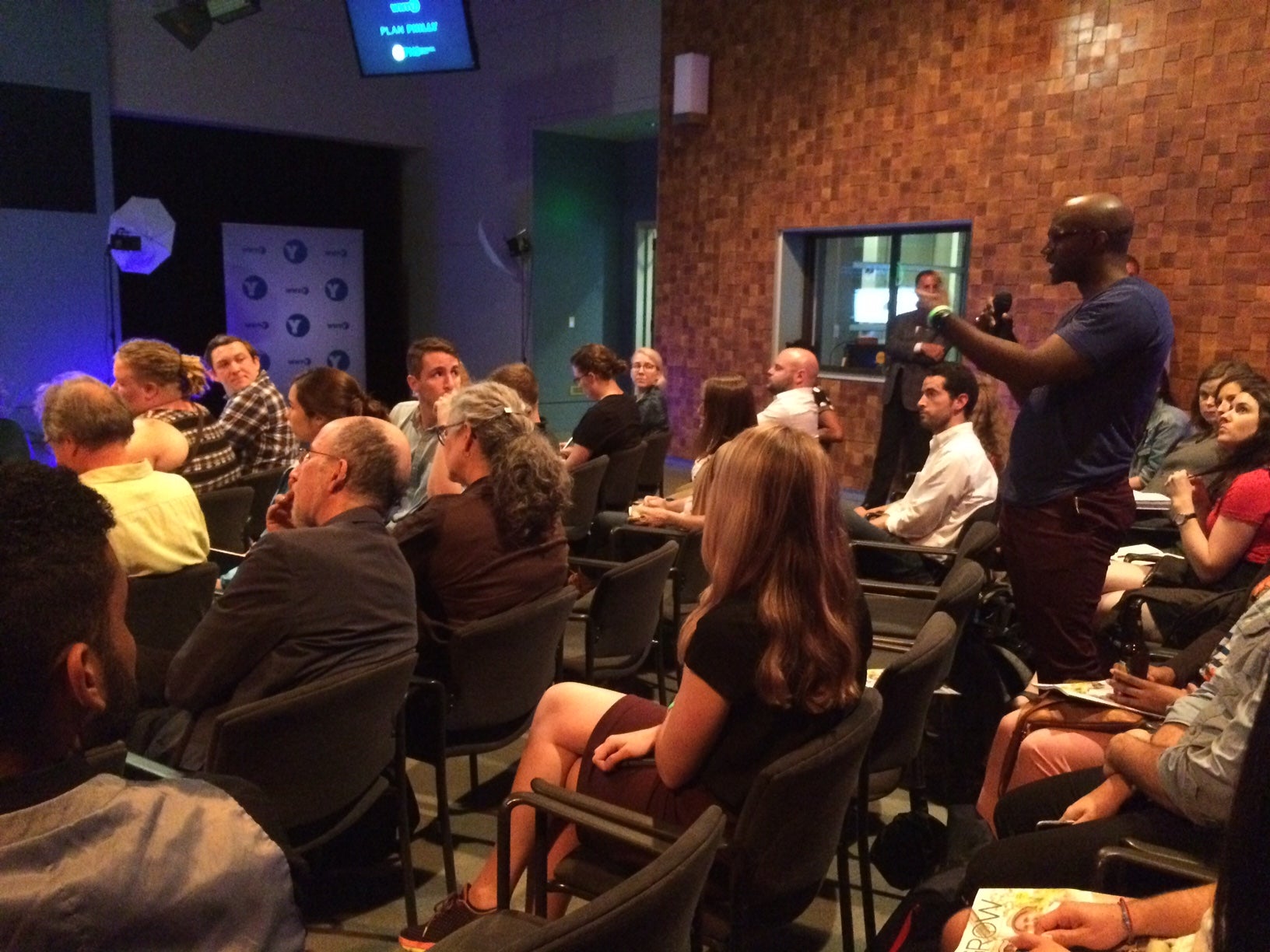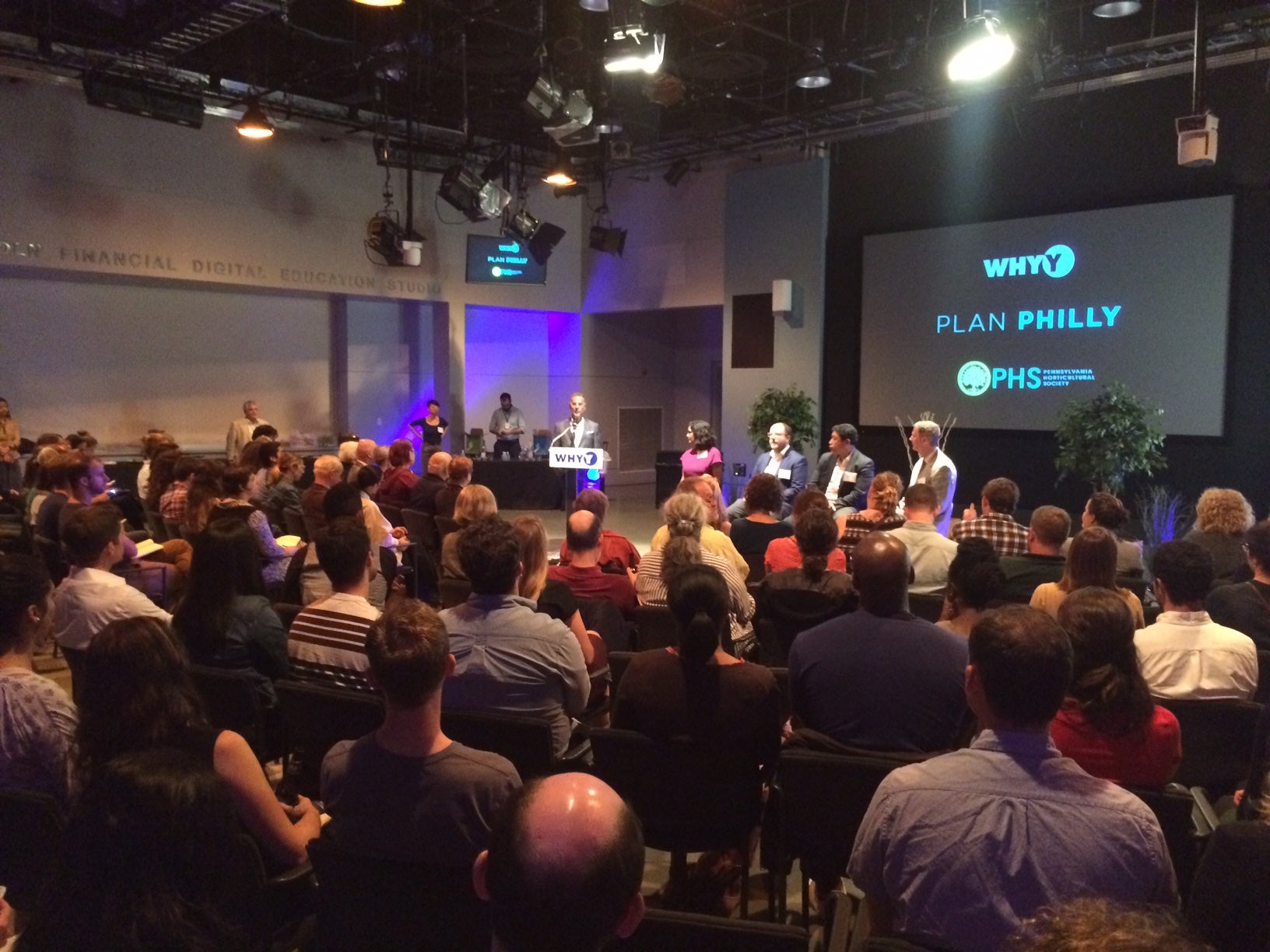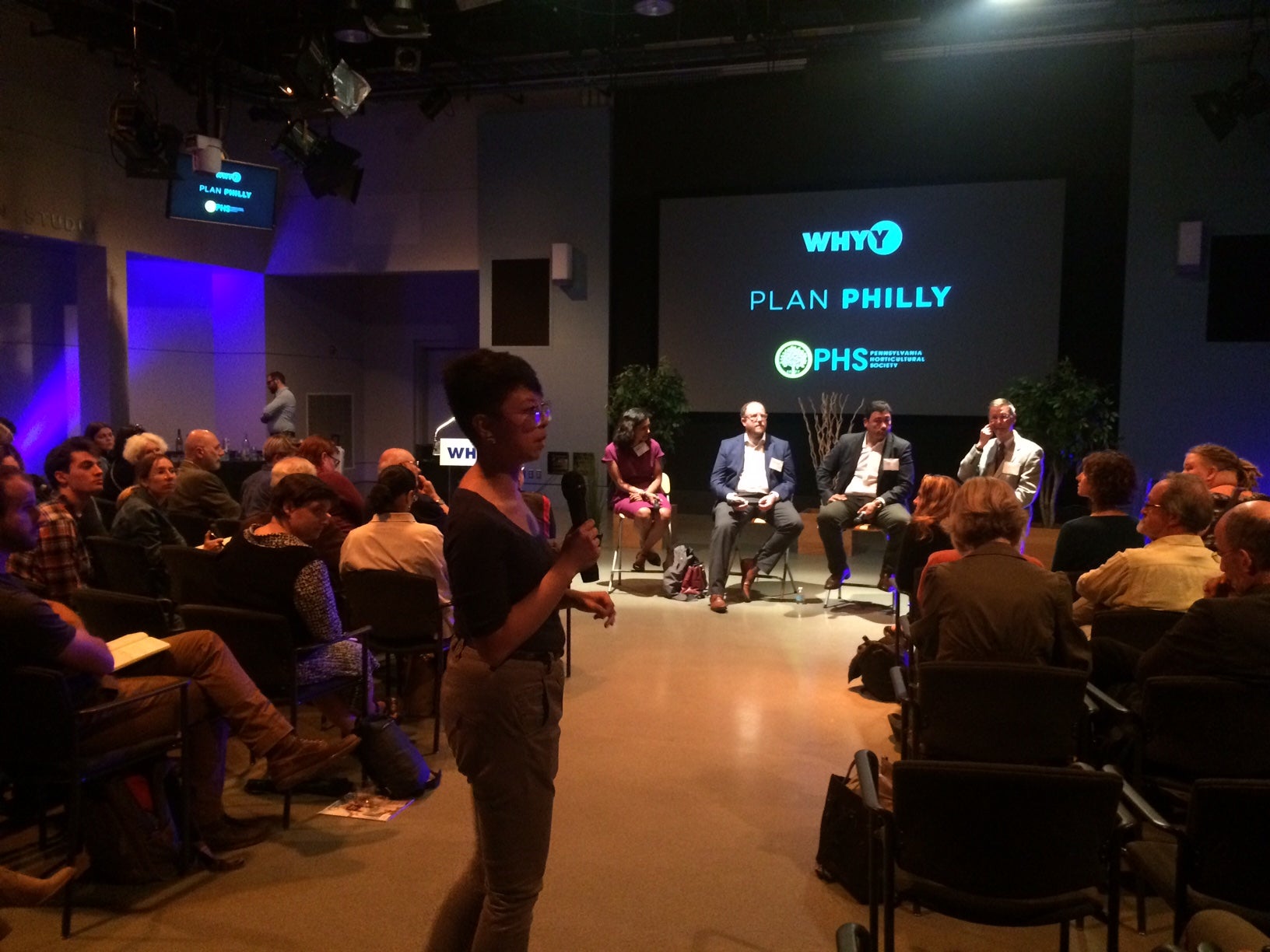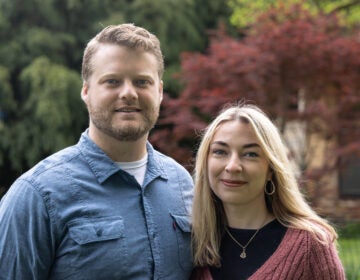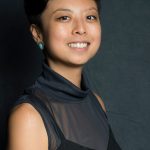Between Two Planters: Longtime practitioners discuss transforming urban spaces in Philadelphia
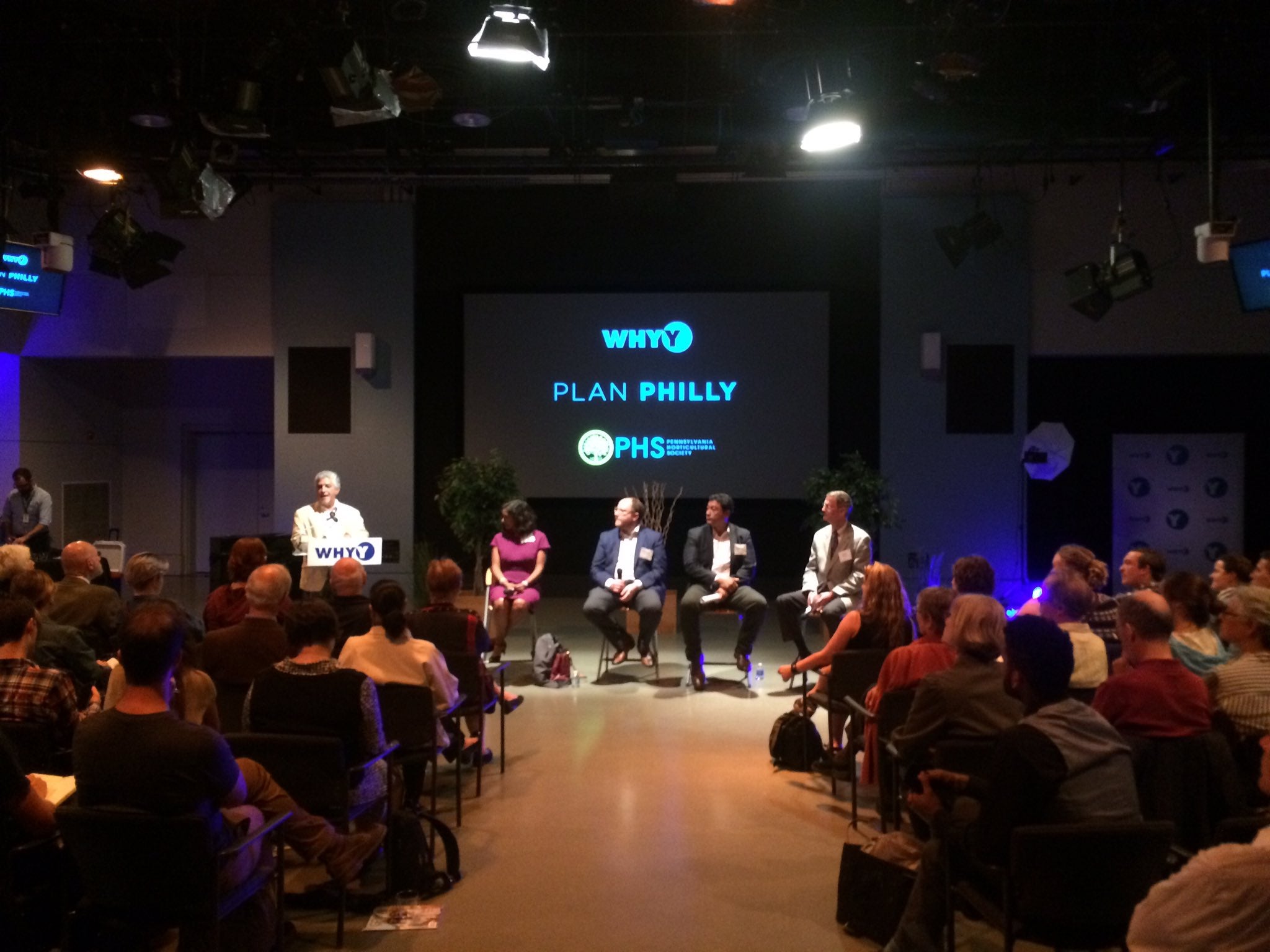
Planners, public utilities fans, and curious residents packed WHYY’s studios Wednesday to discuss the transformation of urban spaces in Philadelphia. PIDC‘s Prema Gupta, the Philadelphia Land Bank‘s Angel Rodriguez, PHS‘s Matt Rader, and WEXFORD SCIENCE+TECHNOLOGY‘s Joe Reagan sat down in front of two tastefully placed planters and talked about the evolution of public space and their work with PlanPhilly’s Diana Lu.
In Fairmount Park System, Where We Lay Our Scene
Philadelphia Art Commission Chair Alan Greenberger kicked off the conversation, highlighting four things that laid the groundwork in the resurgence of public spaces: 1) cities, while imperfect, have gotten safer; 2) we are living in an entrepreneurial moment; 3) with the decentralization of voices and the advent of social media, we can not only invent ideas about the public realm, but take ownership of them; and 4) people value human interaction.
Key Takeaways
Recognizing that ownership and financial models adapt over time, the panelists shared a few key takeaways:
Location and needs matter: there’s a difference when PHS does a pop-up in Center City versus when Asociación Puertorriqueños en Marcha builds a pop-up in Eastern North Philadelphia, where there are huge tracts of underdeveloped land and a lack of density. Rodriguez urged the audience to consider what open space means to different parts of the city, and how disposable income, density, and evolution of function comes into play.
As users and needs change, Gupta emphasized practicing radical empathy. Gupta stressed too the importance of maintenance and operations in the long term. Private money helps facilitates space transformation projects like Dilworth Park.
What we build depends on what we want to create and how it’s supported, Rader said. A healthy city, he explained, offers a hugely diverse array of options and solutions that help meet the needs of its different citizens so that everyone can have a dignified experience that enhances their quality of life.
The pop-up model works as a temporary intervention and means to an end. Now, to what end? The panelists admitted that it took trial and error. When WEXFORD shifted focus to creating more urban and more placemade environments, Reagan explained, they didn’t have the answers to what made such spaces work. The end product, Reagan reminded everyone, needs to be economical, temporary, and ultimately replaced with a more permanent structure.
Greenberger mused, “Does it last forever? I have no idea. I hope so.”
What happens next is up for everyone to decide. Who will own these spaces? Who will they serve? How will they adapt to the needs of a changing city? Who will continue to invest in them, financially and programmatically? Let’s keep the conversation going, Philly.
Resources In The Room
Audience members and speakers alike raised questions about continued community engagement with the city, private developers, and each other. The panel concluded with suggestions from the audience of local organizations and resources to continue the conversation:
Citizens Planning Institute (which is accepting applications until September 20)
The Cosmopolitan Canopy by Elijah Anderson
The Philadelphia Parks Alliance
Powelton Village Civic Association
Alliance for Philadelphia Public Schools
Find your local Registered Community Organization (RCO)
Find your local community development corporation (CDC)
Find your local Neighborhood Advisory Committee (NAC)
Have a resource to share? Meeting, forum, or event neighbors should know about? Join PlanPhilly’s community-sourced events calendar.
WHYY is your source for fact-based, in-depth journalism and information. As a nonprofit organization, we rely on financial support from readers like you. Please give today.




